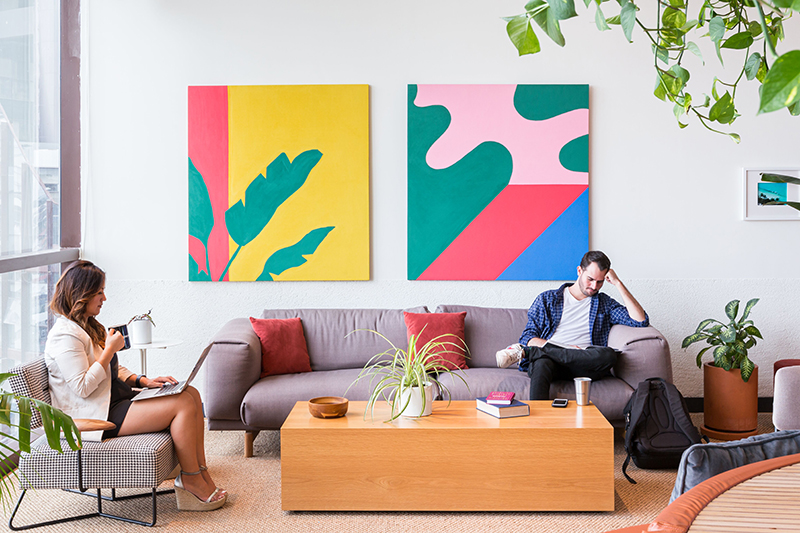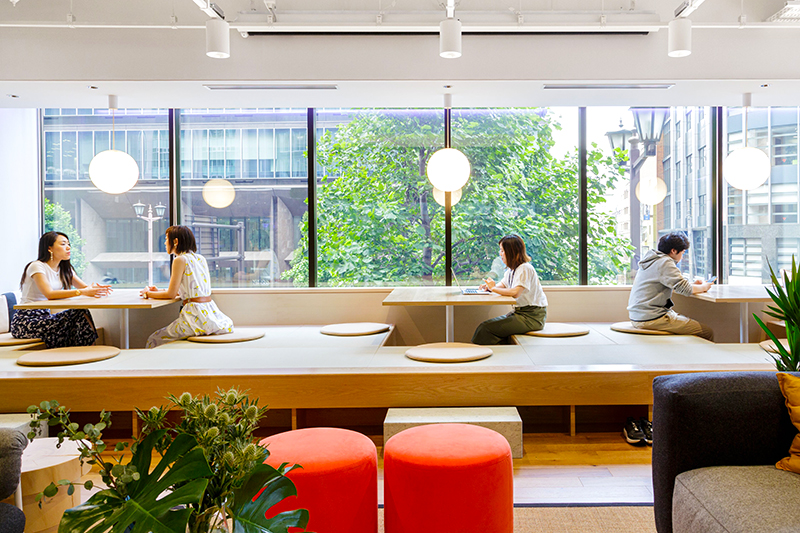Creative employees can help grow your business by coming up with better solutions to problems, expanding sales opportunities, and distinguishing your products and services from competitors.
In order to foster a creative workplace environment, you have to first help spark creative thinking in your employees. Many people forget how to let their minds run wild and come up with innovative ideas. Give them a little help by encouraging the right mindset to take hold. Try these ways to allow a creative culture to blossom.
Six ways to encourage creativity at work
There are so many ways to foster creative thinking in your employees. It’s important to test multiple strategies, since individuals respond differently when prompted to think outside the box. Below are several actionable ways to promote creativity in the workplace. These steps will encourage your employees to think creatively and facilitate a culture of innovation at work.
1. Set the stage for brainstorming
When employees have a wide-open whiteboard to work with, you never know what ideas might come up. When they have an empty slate, with plenty of markers and opportunities to brainstorm, your business can reap the rewards.

In place of whiteboards, consider putting down sheets of white butcher paper down on the break room tables and scatter with various writing utensils. This will give employees a place to scribble down an idea when unprompted—often the scenario in which great ideas incubate. They may even end up in an impromptu brainstorming session with someone from a different department. Loose, pressure-free brainstorming in a relaxed setting is one of the best ways for your business to generate new ideas.
2. Encourage individuality
Let your employees know that you value their thoughts. It sounds simple, but employees get used to feeling like part of the pack and can sometimes think it’s better to just keep up with their workload, blend in, and not become a squeaky wheel.
Employers should take extra steps to let employees know that individuality is appreciated. Make it clear that you see them as unique, interesting people, and not simply as your workers. Employees respond well to these gestures and will reward you with their insights and ideas.
3. Provide a stimulating atmosphere
When thinking about how to improve your office space to encourage creativity, consider the following elements:
- Sound
- Color
- Temperature
- Lighting
Sound
Your employees will benefit from environments with varying noise levels. Quiet environments are good for staying focused, but having ambient noise at a moderate level works best for encouraging creativity. Overhearing other people’s conversations is a major distraction that can hinder the creative process. Through private workspaces, collaborative table setups, and comfortable places to think, your physical office spaces can stimulate innovation.

WeWork The Landmark in Guadalajara.
Color
The colors and vibes established in the office can also impact the energy of the space. Humans don’t respond well to typical office colors or vast areas of white and gray, beige, tan, and brown. These colors appear sterile and oppressive, and they’re ultimately uninspiring. White walls are hard for eyes to adjust to after looking at screens, and the constant contrast of stark white with gray cubicles, dark desks, and dark carpeting fosters more eye strain than creativity.
Instead, give employees some color. Pastel blue and green shades make for settings that are easier on the eyes, and they can create feelings of relaxation. Shades of green work well in spaces where employees need to focus and complete tasks. Green makes people feel relaxed and happy because it’s the color of nature, and humans are still wired to respond to it. Indoor plants can enrich a space, increasing productivity, feelings of happiness, and—yes—creativity. (Dead plants, however, aren’t helpful, so invest in a plant care service if you don’t have a knack for keeping plants healthy.)
In spaces where you want to stimulate thinking, such as in a conference room, use a bold warm color like red or orange. This color will help wake up your employees’ brains and could lead to some lively discussions. Use red or orange anywhere that you want to create an energized atmosphere.
Temperature
The temperature of a room can have an impact on your employees’ brainstorming abilities, too. Employees will be able to think better and come up with new ideas when the workplace temperature is comfortable. A temperature in the low 70s is ideal. Cozy employees come up with more creative ideas. It might cost a little more to keep the temperature in the right range, but the benefits could easily offset the expense.

Light
Light also plays a role in fostering creativity. Bright light is great for work that requires focus, while lower lighting lends itself better to creative thought processes. Natural light is ideal, if it’s available. Otherwise, choose lighting that best simulates the look of natural daylight.
4. Facilitate anonymous suggestions
Employees may sometimes feel too intimidated to make suggestions publicly. Even when you encourage employees to come forward with creativity, fear of embarrassment, general anxiety, or something else may keep some from freely speaking their mind.
Remove social barriers by providing employees with the ability to share their ideas anonymously. Put suggestion boxes around the workplace, distribute identity-protecting forms online, and be sure to show that even when provided anonymously, employee suggestions are being heard.
5. Act on good ideas
Employees are more likely to offer their suggestions if they think their ideas will be implemented. Employees may stop providing their ideas entirely if they feel nothing is being done with them. Make a point of letting employees know when you’re implementing a new creative idea.
Once you’ve determined that the idea is a success, go ahead and let the staff know how this great new idea came to be. Don’t make a public announcement about whose idea it was until you have great results to show. This will foster creativity in the workplace by increasing your employees’ motivation to contribute.
6. Continue to hire diverse talent
Diversity contributes to an atmosphere of creative thinking. It’s good for business to have employees from different fields, different schools, and different backgrounds. Employees with too many similarities in education and experience can often come up with ideas that start to sound repetitive after a while. To increase diversity in your workplace, start looking at résumés for the differences that might benefit your business instead of choosing new staff members because they’re similar to employees you already have.







